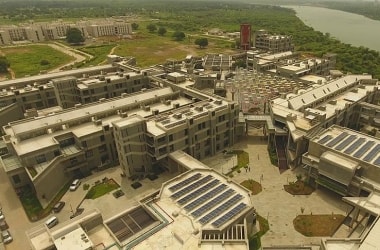
Near real-time monitoring of drought at a 5-km scale that will help policy makers in water management at a district level is now possible, thanks to tools developed and made available online by researchers at the Indian Institute of Technology (IIT) Gandhinagar.
The researchers offer precipitation and temperature datasets and drought indicators available from 1980 to April 2017 covering the entire South Asian region.
The data will be updated weekly.
Besides drought, the datasets can also be used for monitoring heat and cold waves in South Asia.
We don’t know whether a particular region is in drought as we don’t have real-time rainfall and temperature data at appropriate scale.
IMD [Indian Meteorology Department] provides daily rainfall data mainly during the monsoon season.
There’s no real-time information at high-resolution about drought after the monsoon season.
IMD’s drought information is based only on rainfall data and does not incorporate the role of air temperature.
But higher temperature after the monsoon season can cause drought-like situation due to increased evaporation and transpiration losses.
Datasets on Drought: Know More- The team wanted to provide information in near real-time on whether a region of interest is under drought and what part of a district or sub-basin is under drought.
- The emphasis was to develop a dataset at a finer resolution (5 km) as the data provided by IMD and other agencies is coarse (resolution of 25 km).
- The researchers used CHIRPS global rainfall data which are available at 5 km resolution and corrected the data for bias and errors.
- CHIRPS stands for Climate Hazards Group InfraRed Precipitation with Station.
- The precipitation dataset at a finer resolution of 5 km over the entire South Asian region was evaluated against a standard rainfall database (APHRODITE) that is available for South Asia and satellite-based information.
- Earlier studies have shown that the Aphrodite database matches the IMD rainfall data quite well.
- The drought indices — standardised precipitation index and standardised precipitation evapotranspiration index — were estimated using the bias-corrected, high-resolution data and evaluated against satellite-based drought products.
- The validation gives the confidence that the dataset can indicate the severity and extent of drought at a district and sub-basin level in south Asia.
- The researchers used the drought indices to assess severity and extent of drought in 2015 for a four-month period from June to September.
- The developed dataset and drought indicators performed well over the South Asian region.
- Apart from IMD, this is an additional effort to provide more real-time information on drought that can be used for decision-making.